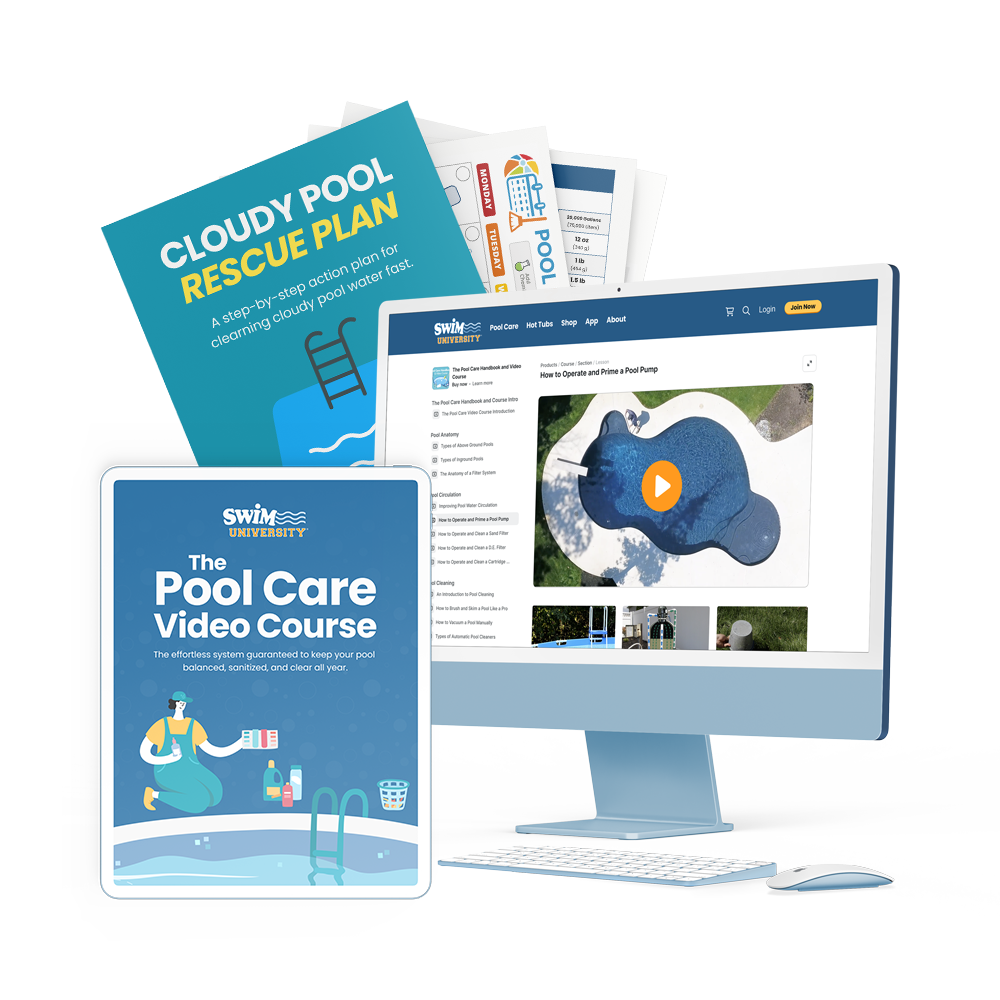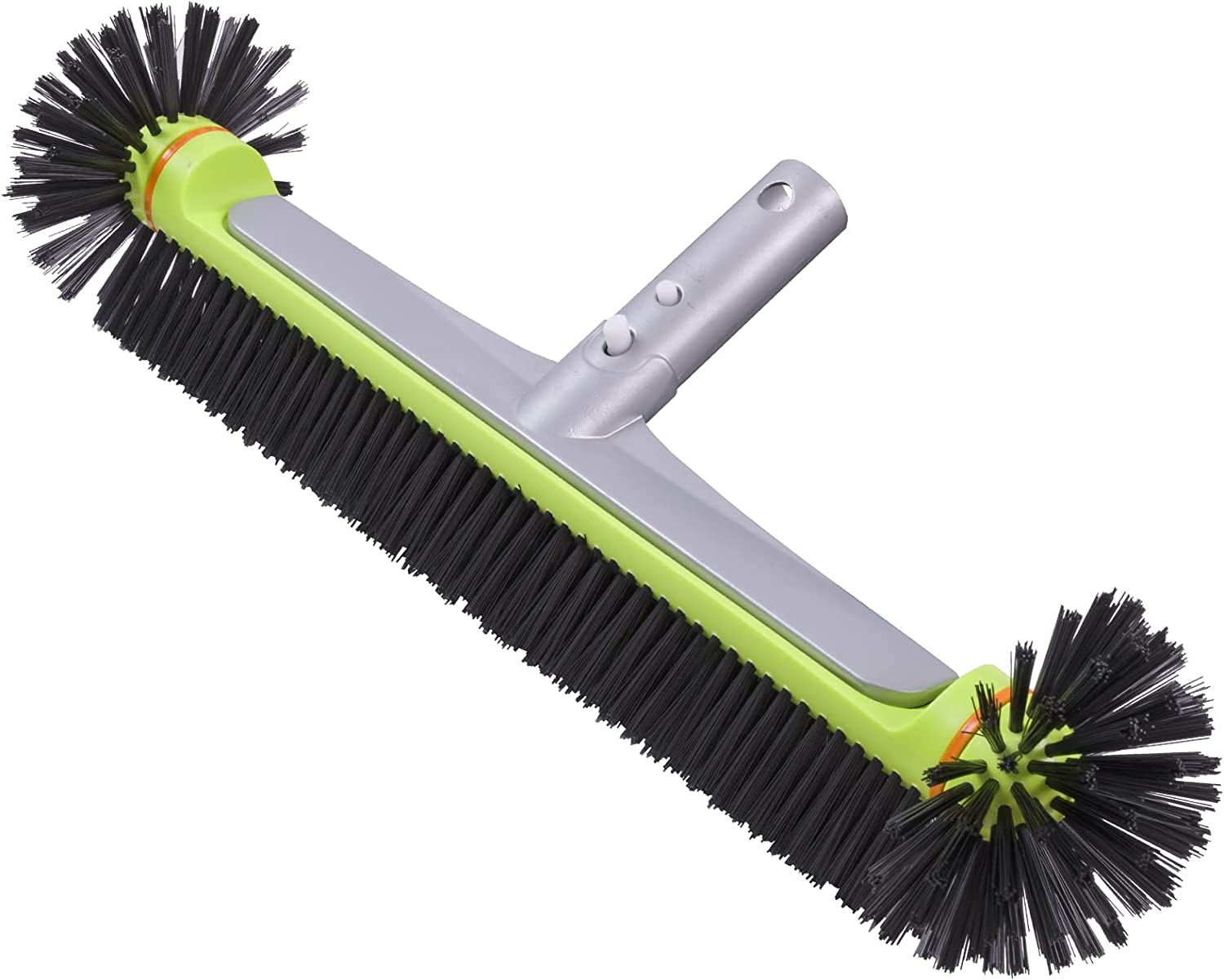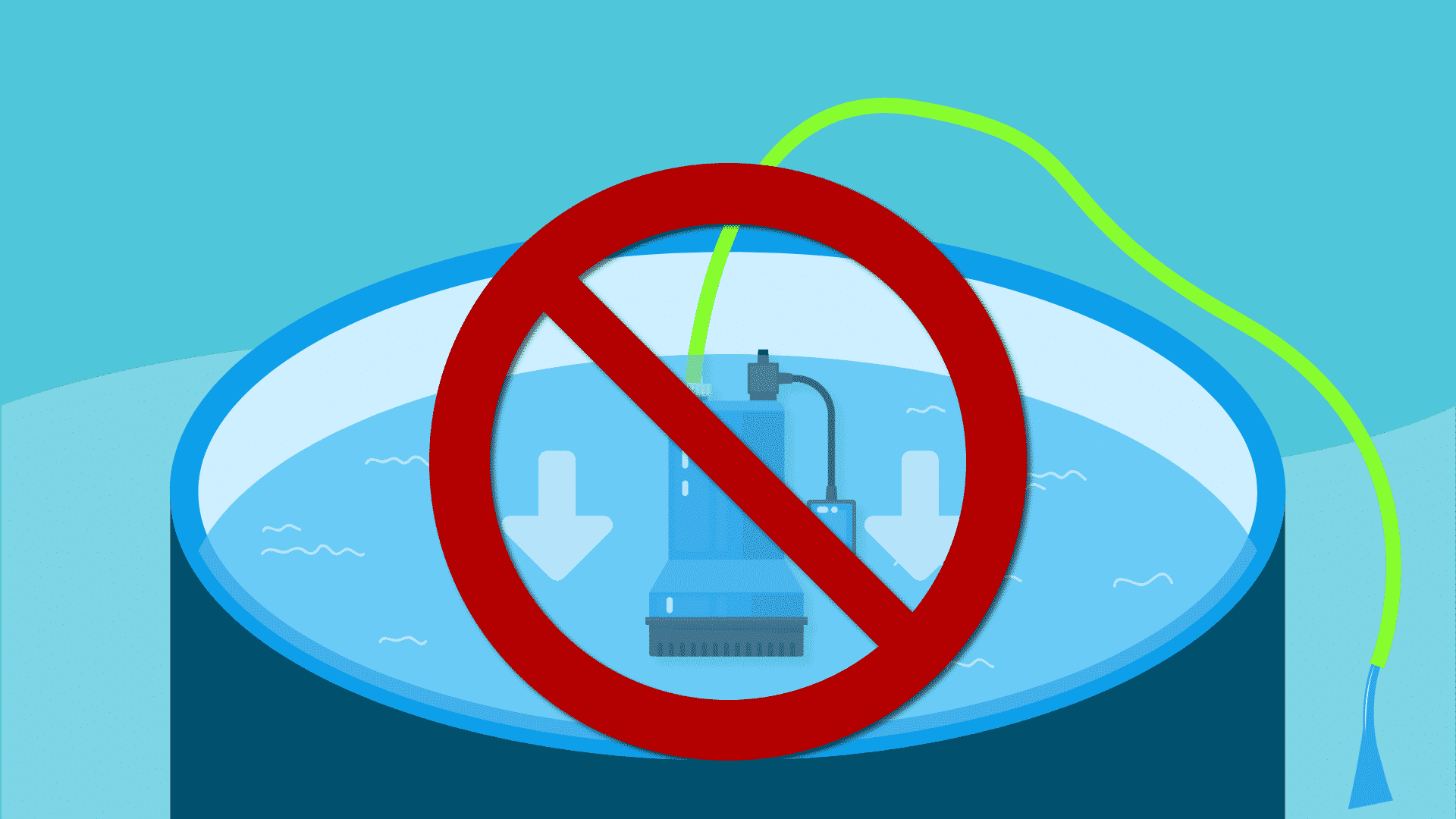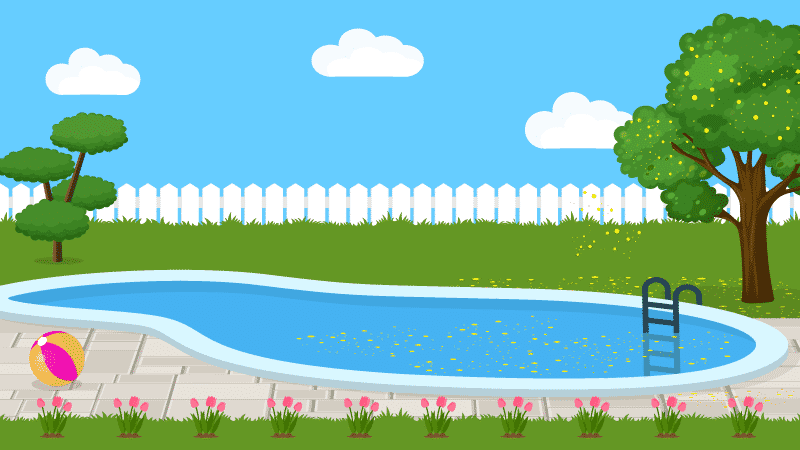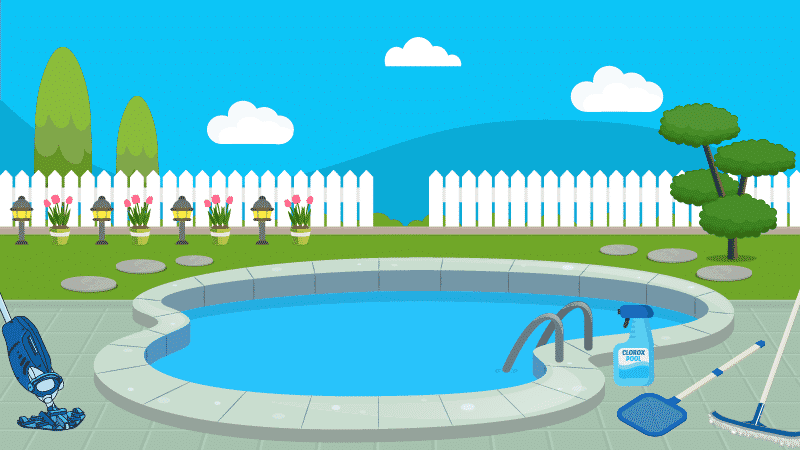11 Common Pool Maintenance Mistakes
Making pool maintenance mistakes ranks on our personal scale of fun somewhere between tripping on a rake and getting kicked in the tender bits. Owning a swimming pool brings plenty of chances to make pool care mistakes, big or small.
But mistakes are really just opportunities to learn. Educating yourself on the most common pool maintenance mistakes helps you keep your pool safer, cleaner, and running efficiently with less mess and frustration.
Stop wasting time and money with confusing water chemistry and maintenance. Our effortless system guarantees to keep your pool balanced, sanitized, and crystal clear all year. Works for all pools including saltwater.
1. Adding Shock Directly Into The Pool Water
The chemical we call pool shock is basically concentrated chlorine. At high strength, chlorine can bleach anything that enters your pool. For example, it can turn black clothes pink and white clothes yellow if the concentration is too high.
Don’t worry—you can’t overshock your pool. But beyond fashion faux pas, adding shock directly to the pool water if you have a vinyl liner can be a disaster. The shock granules will sink the bottom and bleach out your liner. The bleached area becomes brittle and frail, causing leaks.
The Solution
Pre-dissolve the chemical in a bucket of water before you shock your pool. This will allow the shock to disperse more evenly in the water, protecting your liner, pool walls, and floor.
An important rule to remember when you’re avoiding pool maintenance mistakes is “Always add chemicals to water, and never water to chemicals.” Fill the bucket with water first before adding the shock to avoid potentially dangerous splashback.
Also, using warm water will dissolve the shock more easily, but it will also create the awesome-sounding but not-so-awesome-feeling chlorine steam. Slip on your protective eyewear, a chemical mask, and chemical-resistant gloves before you prep your bucket of shock water.
This fast-acting, quick-dissolving swimming pool shock kills bacteria, controls algae, and destroys organic contaminants in pools.
2. Not Brushing Your Pool
You already know how important it is to vacuum your pool regularly to keep scum and gunk from building up and ruining your swim.
But just like your teeth or a hutch of Angora rabbits, your pool needs a good brushing to look its best. Whether you vacuum your pool manually or automatically, follow up with a good brushing.
The Solution
Grab yourself a pool brush and attack your pool’s hard-to-reach areas, including:
- Behind ladders
- Waterline
- Steps and stairs
- Corners and crevices
All this scrubbing keeps algae and other funky, gunky invaders at bay. Brush once a week, or more often if it needs it, for a healthy, pristine pool.
The wide pool brush with 360-degree reach helps clean hard-to-reach surfaces and tough crevices. Perfect for any type of pool, including vinyl liners, fiberglass, and painted concrete.
3. Using An Automatic Pool Cleaner When You Have An Algae Problem
Dealing with pool algae is hard enough. Add vacuuming to the list, and you might find yourself thinking it’s time to replace your pool with something less high-maintenance, like a rare orchid farm or a meerkat sanctuary.
It’s tempting, but don’t fire up your robotic cleaner. Pressure-side automatic pool cleaners push algae and other debris up through a mesh bag. This gives the algae a nice little tour of your pool, but doesn’t remove it.
Taking things high-tech won’t help, either. They do an amazing job when algae’s not an issue, but even the best robotic pool cleaners use a fine mesh bag that’ll clog with algae—fast. The clogged gunk gets blown around the pool, and you’re back to square one.
The Solution
Solving this very common pool care mistake is easy, though a little more labor-intensive. You’ll need to break out the manual vacuum. Be sure to switch your filter to “waste” or remove the drain plug.
Yes, you’ll lose a fair amount of water, but you’ll also lose the algae. They’ll be vacuumed right out of your pool and out of your life. Here’s our guide to how to vacuum a pool manually.
4. Ignoring Your pH and Alkalinity Levels
Waaaaaay back in your high school science classes, you probably learned about the importance of balanced pH to healthy, happy ecosystems—including your pool. A low pH indicates acidity, while a high one indicates alkalinity. Too much of either is bad news.
If your pool water has a very low pH, it’s very acidic. This might seem like a good thing at first; after all, it’s very hard for algae and other invaders to thrive acidic water. Plus, acidic water sparkles and appears, at first glance, to be pristine and pure.
But as we once found out after eating some really bad gas station sushi, appearances can be deceiving. Low pH can actually damage your pool equipment, including:
- Pool pump and filter
- Vinyl liner
- Heater
- Automatic pool cleaner
- Chemical feeder
- Maintenance equipment
- Solar blanket
The Solution
Our motto? Better living through chemistry. Balancing acidity and alkalinity keeps your pH stable. Because just about anything can skew water chemistry in no time flat, make sure you test your pool water regularly.
Then adjust your levels with pH increaser, alkalinity increaser, and other essential chemicals until everything’s back in balance.
5. Backwashing Your Pool Filter Too Often
Despite its name, backwashing is NOT a secret toddler technique for leaving floaties in your soda. Backwashing cleans the media inside your filter, whether it’s sand or diatomaceous earth (D.E.). Pool water washes funk and gunk out of your filter media, then exits through your filters backwash valve drain port.
Backwashing is an important part of basic pool care, but overdoing it is one of the more common pool maintenance mistakes.
The Solution
Keep an eye on the pressure gauge on your filter tank. Right after you give your filter a thorough backwashing, take note of the pressure gauge. In most cases, it will read between 10 and 15 pounds per square inch (psi), which is the appropriate baseline for optimal filter performance.
Now, this might seem counterintuitive, but the more debris that’s caught by your filter, the better your filter will function—up to a point. Extra debris helps trap finer particles, but the benefits disappear once the buildup raises your pressure reading to around 10 psi over your baseline (i.e., 20 psi–25 psi).
When the pressure in your filter hits 10 psi over normal, you’ve probably got a nice dose of extra goop in there raising the pressure. Backwash that bad boy, and bring the pressure back down to keep your system humming along at peak efficiency.
6. Adding Pool Shock Through Your Skimmer
Some pool maintenance mistakes are relatively minor. But since making this one can literally blow up your pool’s filter system, we recommend avoiding it at all costs.
Combining calcium hypochlorite or dichlor pool shock and chlorine creates a deadly gas. If you have an automatic chlorinator attached to your filter system and you pour the shock into the skimmer, the two chemicals will combine in a very small space.
The result?
Tiny chamber + deadly gas expansion = BOOM.
The Solution
Keep your pool shock and your skimmer far, far away from one another. Always add your shock following the manufacturer’s directions, while wearing appropriate safety gear.
7. Shocking Your Swimming Pool During The Day
Chlorine in your pool water attaches itself to particles it wants to kill, leaving behind chemical compounds called chloramines. Since they irritate the eyes and skin and generally make life miserable, chloramines don’t belong in your pool.
Shocking gets rid of chloramines and helps bring your pool’s chlorine levels to a well-balanced 3 parts per million (ppm).
But while daytime is great for enjoying your pool, it’s the wrong time to shock. See, shock is unstabilized chlorine. The sun, which is not kind to pool shock at all, will burn off 1 ppm each hour, reducing the efficiency of your chemicals, and wasting your money.
The Solution
Shock at night to give your pool shock the time it needs to do its job. Also, shock your pool once a week, using about 1 lb. (.5 kg) of shock for every 10,000 gallons (37,854 L) of water, and test until you’re at or near the target of 3 ppm.
This complete water testing kit helps keep your pool or hot tub clean and safe to swim in, with easy-to-follow color instructions and all the supplies you need in one box.
8. Not Leveraging the Calcium Hardness In Your Pool Water
As with pH, balancing your water’s calcium hardness is essential to a clear, clean, and safe swimming pool. And while you don’t want too much because it’ll cloud the water, a little hardness is actually a good thing.
It helps extend the lifespan of things like vinyl liners, concrete, plaster, fiberglass, and filters.
The Solution
You can add calcium hardness increaser to keep your calcium hardness at the recommended level of 175 ppm to 225 ppm (200 ppm to 275 ppm for concrete and plaster pools). Add it when you open your pool to get the level where you want it. Check it often throughout the swim season, since evaporation and splash out can drop the levels too low.
Oh, and if you use calcium hypochlorite shock, you’re actually adding a little bit of calcium each time you use it. It’s a bit of a twofer for the thrifty pool owner, because it shocks and helps prolong the life of your pool equipment. Nice.
Adding calcium hardness to your pool water will protect and extend the life of your pool walls including vinyl, fiberglass, and concrete.
9. Running Your Pool Filter System Fewer Than Eight Hours A Day
Your pool’s filter can’t do its job if it’s not running. The more you run your pool filter, the fewer contaminants and critters can create headaches. As pool care mistakes go, this one’s pretty minor, but it’s still worth your time to clock that filter.
The Solution
Run your pool filter and pump at LEAST eight hours a day. Depending on the size of your pool, this should be plenty of time for all of the water to pass through the filter, keeping your water clearer.
10. Neglecting To Test Your Pool Water Weekly
Owning a pool comes with a whole list of chores to complete every day, week, month, and year. Your weekly water testing is one of the most important, since it can tip you off to small issues in your pool’s water chemistry before they blossom into major disasters.
The Solution
Test your pool water at least once a week, either with test strips or a liquid test kit. Then take a sample of your pool water to your local pool supply store to get a detailed analysis at least once a month.
The primary levels you should be testing for are:
- pH and alkalinity
- Calcium hardness
- Cyanuric acid (chlorine stabilizer)
- Salt and total dissolved solids (TDS) levels
- Copper and iron
You don’t need a complete, CSI-style workup every week, but definitely check your alkalinity, pH, and free chlorine levels, since they’re the core components of safe, sanitary pool water.
Tests for 7 important chemistries in seconds: Total Hardness, Total Chlorine, Total Bromine, Free Chlorine, pH, Total Alkalinity, and Cyanuric Acid.
11. Wearing Street Clothes in Your Pool
Listen, we’re no strangers to fashion-forward trends. We can rock the majestic weirdness of a romphim with the best of ’em. We even thought about picking up one of those Lady Gaga swan dresses for casual Fridays a few years back. But we draw the line at street clothes in pools.
Wearing your everyday duds in the pool can introduce chemicals, fibers, and other contaminants to your water. Plus, the chemicals in your water can actually ruin your clothes. Your water will be compromised, and everyone in the neighborhood will wonder why you’re suddenly so into the tie-dyed look.
The Solution
Keep your clothes streetside and stick to swimsuits in the pool.
Every Mistake Holds a Lesson for Better Pool Care
Nobody’s perfect. From poor water chemistry to letting your Uncle Hank test his experimental beer-powered algae extractor, we all make pool maintenance mistakes.
But every goof is a new lesson on improving your pool care game. And if you take the time to learn from the mistakes of others, you’ll find you’re spending less time maintaining your pool, and more time enjoying it.
Happy Swimming!
3 Ways We Can Help With Your Pool
- Pool Care Cheat Sheets (Free): Easy-to-use downloadable guides to help you keep track of taking care of your pool this year.
- The Pool Care Handbook: An illustrated guide to DIY pool care, including water chemistry, maintenance, troubleshooting, and more.
- The Pool Care Video Course: You’ll get 30+ step-by-step videos and a downloadable guide with everything you need to know about pool maintenance.

